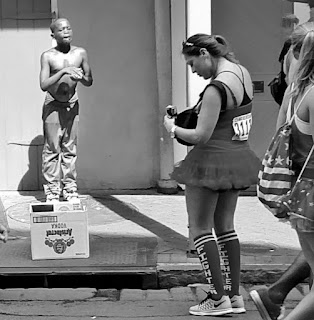 |
| Two photos, years apart, on Varettoni Place, named after Dad's brother. |
All Souls’ Day, Nov. 2, is democratic. It’s the liturgical Festivus for the rest of us.
Like people in other cultures, I believe that the spirits of my dead ancestors are always surrounding me. Which probably explains why I need a life coach.
It also explains all my odd family customs around food and drink.
For example, this past Oct. 9 – on what would have been John Lennon’s 75th birthday – my family had hot dogs and beans for dinner, with fudge marble cake for dessert.
 |
| Dessert on Oct. 9. |
On Oct. 24, 2015, on the 10th anniversary of my Dad’s death, I sat down at Dad’s favorite diner, the Tick Tock in Clifton, NJ (not far from Varettoni Place). I ordered his favorite meal: eggs over with sausage, home fries, rye toast and coffee.
The older I get, the more I can taste the past.
I can’t take a bite of black licorice without thinking of Dad’s father, whom I called Nonno. My grandfather was a great fan of the New York Mets in the 1960s, and I have fond memories of him in his easy chair while watching baseball on TV.
 |
| Breakfast on Oct. 24. |
Her airing of grievances – in imitation of Nonno – proves that honoring the dead has nothing to do with heredity. Instead, it is inextricably linked to our salvation.
Let me explain.
On the occasion of the 10th anniversary of my Dad’s death, my Mom had a Mass said in his name at St. James parish in Totowa, NJ. My sister took a red-eye flight from California to attend – and we had both ordered eggs over with sausage, home fries, rye toast and coffee at the Tick Tock Diner that morning.
During the homily at the memorial Mass, a priest claimed the Gospel passage contained proof of Jesus’ historical existence: The fact that the beggar who approached Jesus had a name, and even referenced his father by name, was the kind of significant detail that had the ring of truth.
Later, at the same Mass, there were more important words that brought home a larger truth to me.
The priest raised the host at the moment of consecration and said, “Take this, all of you, and eat it... Do this in memory of me.”
So let's eat and drink and celebrate to honor our dead.
With both joy and sadness in my heart, I offer an All Souls’ toast to Dad and Uncle Pat, Nonno and Nonna, my Mom’s brothers and sisters, and all the dearly departed in my life.
Although they would never presume to call themselves saints, I know that – as long as I am alive – they will never die.











